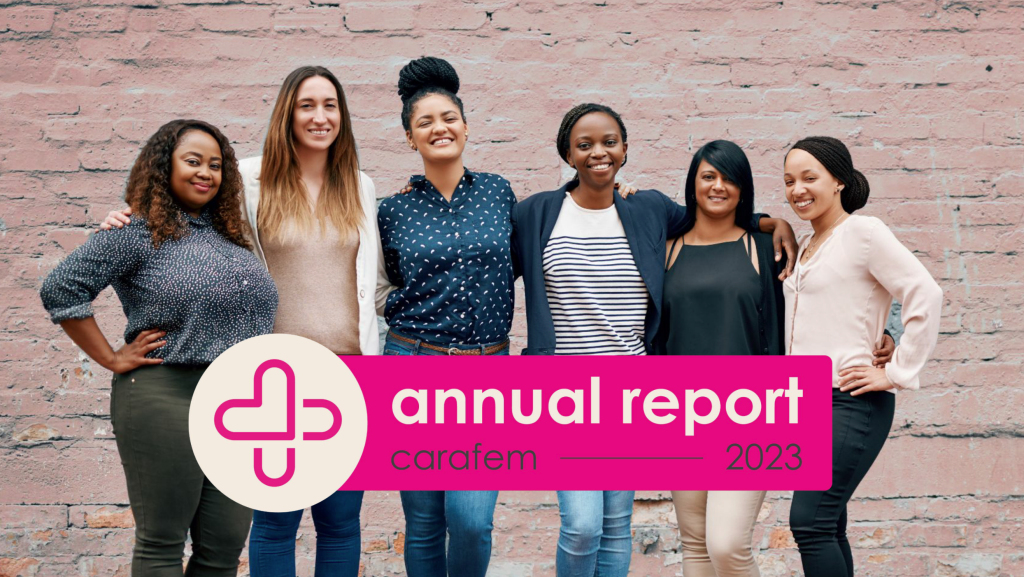
If you read the news, watch TV, go to the movies, or basically digest any kind of media, then you’ve probably been exposed to some misinformation about abortion. From breast cancer to fetal pain, abortion horror stories run the gamut and are perpetuated by many groups against abortion. It’s a pretty rough landscape out there for anyone considering abortion as an option. Here’s the thing, though: most of those stories are just that. Stories. Myths. Urban legends.
So, if you’re wading through the jungle that is the Internet, you need information you can trust. At carafem, we do not shy away from these topics that so many other people gloss over. Our mission is to change the conversation surrounding abortion and to start a dialogue. We’re setting the record straight.
Here are the ten most common myths about abortion, and, in true myth-busting style, we’re going to debunk every last one.
1. Abortion is killing a baby
There’s a lot of controversy out there about this myth, and it’s probably the most commonly used argument. Whether it’s in politics, religion, or morality debates, most people have heard this at one point or another. But let’s focus on scientific facts:
In the first trimester, there is an embryo, which develops into a fetus after the end of the second month of gestation. In these early stages of pregnancy, the fetus is not an autonomous being. That’s a lot of medical talk, but the basic gist is this: during the first and second trimesters (when most abortions are performed), the fetus is not viable, meaning it could not survive on its own without being attached to its parent’s womb.
2. Abortion is dangerous
Here’s the simple truth: abortion is NOT dangerous! In fact, abortion, particularly first trimester abortion, is one of the safest medical procedures you can have. According to the Guttmacher Institute, first trimester abortions carry less than a 0.05% risk of a major complication that would lead to a hospital visit.
And here’s something that will really blow your mind: abortion is significantly safer than childbirth. Yeah, that’s right. In fact, researchers have found that pregnant people are 14 times more likely to die in childbirth than from complications during an abortion.
3. You can’t get pregnant again
This myth has no grounds in reality. Safe abortions, whether surgical or with medication, do not impact fertility. Many people who get an abortion want a family, just not right now.
You do not have to give up your hopes of having a family when you want to have one. In fact, abortion does not increase your chances of infertility, ectopic pregnancies, miscarriages, or birth defects in later pregnancies. Countless people go on to have children after their abortion, when they are ready.
4. Abortion is racist
1 in 4 women in the United States will have an abortion at some point in their lifetime. This cuts through all interpersonal identifiers, except for socioeconomic status, where low income people represent 42% of all abortions.
If you want to break it down by race, here’s a list of stats provided by the Guttmacher Institute: Non-Hispanic white people account for 36% of the abortions performed in the United States, non-Hispanic black people make up 30%, Hispanic people account for 25%, and people of other races account for 9% of the abortions performed in the U.S.
People of color are much more likely to experience an unintended pregnancy than other groups, and, therefore, they are more likely to seek and obtain abortions. The question should then be about prevention, not about how these people chose to handle their situation.
But beyond the numbers, focusing on black people’s abortions takes away from their overall agency and is the over-policing of black people’s bodies. It takes away their power as a capable decision maker in their own lives, making the choice that is right for the individual and their family.
5. There are too many abortions
Abortion is a choice made by an individual for a list of reasons that are theirs and theirs alone. So, without getting too subjective on this one, let’s get straight down to the facts. First and foremost, at least half of all the pregnancies in the U.S. are unintended. That’s really a huge number of unplanned, possibly unwanted, pregnancies in this country. The US has a significantly higher rate than many other developed countries, and about 40% of these unplanned pregnancies result in an abortion.
Overall, the abortion rate has decreased in the past 10 years, and there were 1.06 million abortions performed in 2011.
6. Abortion means suctioning out my insides
There’s a lot of graphic imagery associated with this myth, but this is largely dramatized and used as a scare tactic.
During a manual vacuum aspiration abortion (just one possible abortion option), the patient undergoes a procedure where just the uterus (all other internal organs remained untouched!) is emptied. This procedure is used around the world and is incredibly safe, fast, effective, and many people do not have major pain associated with the process.
Another option is medication abortion, which requires the patient to take a series of pills that induce an abortion.
7. People who have abortions regret it or experience intense grief
Getting an abortion means different things to different people. It can be an emotional experience, or it can be very matter-of-fact. Feeling grief or sadness are normal emotions after getting an abortion. The truth is that 95% of abortion patients felt they made the right decision.
8. Only selfish people have abortions
There are many factors that go into deciding to not continue a pregnancy, and it is a deeply personal decision. We believe in the ability of every person to determine their own best path based on their own circumstances. This does not mean selfishness, it means maturity and courage to follow your own path, even when these myths stand in your way.
This myth is one of the hardest to combat because it is largely rooted in sexism, in that people should put children and family first. You, your life, your body, your goals and your dreams are important. And you decide when you’re ready to have children.
9. Abortion causes breast cancer
It seems this is the hallmark myth about abortion because it sounds like it’s rooted in science.
But, in 1997, the New England Journal of Medicine published a study with 1.5 million participants to test this myth. There was no independent link between abortion and breast cancer. Since then, the American Medical Association and the American Cancer Society have made statements that there is no connection between abortion and breast cancer. However, becoming pregnant and carrying a pregnancy to term may reduce the risk of breast cancer.
10. First term fetuses can feel pain
Pain reception takes place in the neocortex, which is not formed until the third trimester. This takes place long after most miscarriages occur, ectopic pregnancies are dealt with, and after 99% of abortions are performed.
Please go and check out these resources if you have any more questions or want to debunk any myths for yourself!
http://www.guttmacher.org/pubs/fb_induced_abortion.html#10
http://www.plannedparenthood.org/health-info/abortion/in-clinic-abortion-procedures



